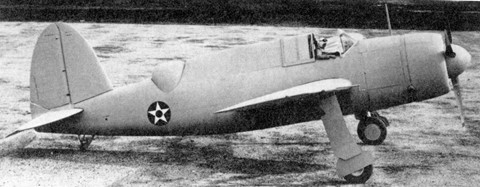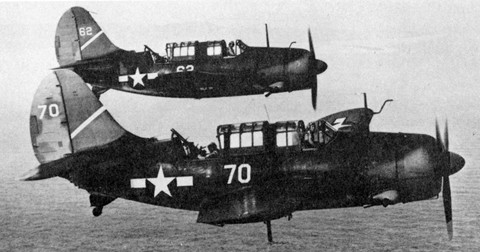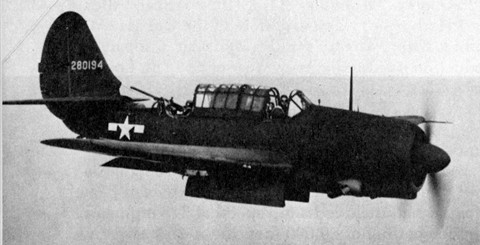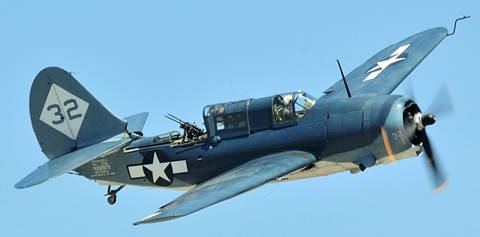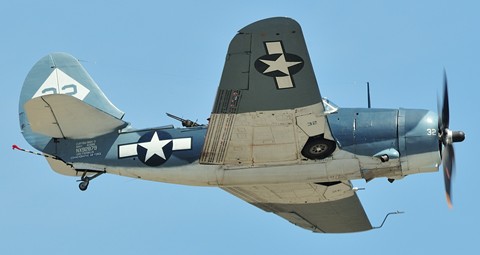|
Curtiss SB2C HelldiverDeveloped to replace the Douglas SBD Dauntless, the Curtiss SB2C Helldiver was a carrier-based dive bomber used by the US Navy in World War II. It was the most widely used American dive bomber in the war with 7,140 (all variants) produced from 1940-1945. The US Army Air Force version was designated the A-25 Shrike. Other countries that flew the dive bomber were Australia, France, Greece, Italy, Portugal, Thailand, and the UK. Curtiss: A Good CompanyBefore exploring the development of the SB2C, it’s important to understand the company. Prior to WWII, the Curtiss-Wright corporation was considered a great aircraft company. During WWI, when it was known as the Curtiss Aeroplane and Motor Company, it was the largest aircraft manufacturer in the world employing more than 21,000 workers in Buffalo and Hammondsport, NY. The company produced more than 10,000 aircraft during the war including the famous JN4 ‘Jenny’. Leading up to WWII, they produced some famous aircraft such as the C-46 Commando and the popular P-40 Warhawk of Flying Tiger fame. That perception changed with the introduction of the Helldiver. Curtiss wartime president, Guy Vaughn, called the Helldiver, “one of the biggest wartime crosses we had to bear.” It’s no wonder that pilots and crew alike called the SB2C, son-of-a-bitch second class. BeginningsWhen the US Navy wanted to replace the SBD Dauntless, they looked at two aircraft - the Curtiss SB2C Helldiver and the Brewster SB2A Buccaneer. Because war was eminent, standard procedure for aircraft development was modified. It is very common in wartime to gamble on the potential of an airplane’s design, especially if the aircraft company has a good reputation as was the case with Curtiss. Production orders are placed before a new design is thoroughly tested. Most of the time aircraft manufacturers can overcome the bugs that are a part of every development program. But, sometimes the company enters unfamiliar waters and fails.
Before we move on to the SB2C story, it must be noted that the Buccaneer (see photo of prototype above), and it’s British variant, the Bermuda, never fired a single shot in the war. The Brewster Aeronautical Company was fraught with mismanagement and government politics. It dissolved in April 1946. Design and DevelopmentThe US Navy wanted a larger aircraft than the Dauntless that was able to operate from the latest aircraft carriers of the time, carry a considerable array of armament, and feature an internal bomb bay that would reduce drag when carrying heavy ordnance. Matters became complicated when requirements set forth by both the US Marines and US Army Air Force compromised the design making the Helldiver a 'multi-role' aircraft. The first Helldiver prototype XB2C-1 initially suffered problems connected to its Wright R-2600 engine and 3-bladed propeller. It first flew in December 1940 and crashed in February 1941. Curtiss rebuilt the prototype to address structural weaknesses, poor handling, directional instability and bad stall characteristics. The second prototype version was also lost in December 1941, when it pulled out of a dive because of catastrophic failure of the starboard wing and tailplane (horizontal stabilizer). Even before the flight of its first prototype, production models were ordered in November 1940 that saw over 800 design changes including larger self-sealing fuel tanks, 195 pounds of added armor, a larger tail, and the number of .50-caliber guns was doubled to four. ProductionOn June 30, 1942, the first production model, the SB2C-1, began flight testing six months behind schedule. The program suffered so many delays that the Grumman TBF Avenger entered service before the Helldiver, even though the Avenger had begun its development two years later. When Helldivers were finally issued to squadrons of the new Essex class carriers in December 1942, they were deemed inadequate for combat. Before becoming president, Harry Truman was in charge of an oversight committee that investigated government fraud and mismanagement. He was quoted as saying that Curtiss-Wright, “had not succeeded in producing a single SB2C usable as a combat airplane.” It didn’t help that Curtiss-Wright put out ads patting itself on the back. With its countless modifications incorporated, the SB2C finally saw combat on November 11, 1943, while operating off the carrier USS Bunker Hill (CV-17 ). As part of squadron VB-17 they attacked the Japanese-held port of Rabaul, north of Papua, New Guinea. Even then, the aircraft still had structural problems which hampered its ability to dive bomb in clean conditions. Optimum dive angle was 80-degrees, almost vertical, which the SB2C could not endure. Britain ordered 450 of the aircraft, designated the Helldiver I, but after taking delivery of 26 aircraft, they canceled the contract citing “appalling handling”.
By March 1944, SB2C-1 and SB2C-1C (see photo above) production quantities had totaled 978 aircraft. Production tempo accelerated at Columbus, Ohio, as well as two Canadian factories: Fairchild Aircraft Ltd that produced a total of 300 designated SBF, while Canadian Car and Foundry built 834 designated SBW. These models were respectively equivalent to their Curtiss-Wright built counterparts. By the fall of 1944, every large carrier had an SB2C squadron. An engine upgrade to the Wright Cyclone R-2600-20 and a four-bladed propeller began with the SB2C-3 and continued with later models and variants. The model SB2C-3E was equipped with APS-4 radar. A-25A ShrikeThe US Army Air Force (USAAF) was interested in the Helldiver so it was allotted 100 of the SB2C-1A which were redesignated as the A-25A Shrike (see photo below). After the attack on Pearl Harbor, the US Navy would need all the output produced by the Curtiss Columbus plant, so a separate production line was set up in St. Louis for the 900 Shrikes that were ordered by the USAAF.
The first 10 aircraft had folding wings, while the remainder of the production order deleted this feature. Many other changes distinguished the A-25A including larger main wheels, a pneumatic tail wheel, ring and bead gunsight, longer exhaust stubs and other Army specified radio equipment. By late 1943, when the A-25A was being introduced, the USAAF decided to replace two-seat dive bombers with single-seat bombers. After offering the Shrike to Australia, only 10 were accepted before the Royal Australian Air Force rejected the remainder of the order, forcing the USAAF to send 410 to U.S. Marines. The A-25As were converted to SB2C-1 standard aircraft but the Marine SB2C-1 variant never saw combat, being utilized primarily as trainers. The remaining A-25As were similarly employed as trainers and target tugs. End of the LineThe Helldiver carried more armament, was bigger, had better range, flew faster, and was produced in more numbers than its predecessor, the Dauntless. Yet, it was the Dauntless that sank more enemy shipping than the SB2C. Helldivers were the standard Navy dive bomber in every battle during the war’s last year. The last US squadron was retired in June 1949. They were used in second-line duties such as target tugs. Fifty were given to Greece for use in their civil war in 1948, and some were used by Italy from 1950 to 1959. It was also the end of the line for Curtiss aircraft. Because of their engineering failings in WWII, they failed to lure any jet aircraft business from the government and subsequently sold their aircraft manufacturing business to North American Aviation (now part of Boeing) in 1948. Curtiss-Wright lives on however as a components manufacturer specializing in actuators, controls, valves, and metal treatment. SurvivorsThe only Helldiver that remains flying is the SB2C-5 (83589). It belongs to the Commemorative Air Force (CAF), Graham, TX. This rare aircraft was nearly lost in 1982 when engine failure forced a hard emergency landing. Thanks to the efforts of the CAF, and $200,000 in cash, this rare bird still flies, which it did at the 2008 Tyndall AFB air show, Florida. All the Helldiver photos on this page were taken by our good friend, Howard German, at that show. I was kidding Howard that every time I went to see this rare aircraft at an air show, something kept it from showing up. Good thing I didn’t go to Tyndall that year:). Other survivors on static display only are: SB2C-5 (83479) at NAS Pensacola, FL (on loan from the National Air and Space Museum). SB2C-3 (19075) at Yanks Air Museum, Chino, CA. SB2C-5 (83321) at Hellenic Air Force Museum, Tatoi Air Base, Greece SB2C-5 (83410) at Royal Thai Air Force Museum, Don Muang AB, Bangkok.
Return to the top of this Helldiver page.
|
